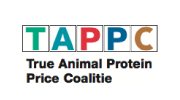The model we use for True Cost calculations is the Sustainability Flower, which groups all impacts on people and planet in six categories: climate, water, soil, biodiversity, social coherence and health. For each category, farming can have both positive and negative impacts.
1: Climate
Climate costs include both societal and ecological consequences of climate change. The main costs are a result of greenhouse gas emissions from the soil as a result of deforestation, intensive use of fertilizer (artificial fertilizer) and tillage. Looking at climate benefits, the focus here is on forms of sustainable agriculture that keep carbon in the soil, conserve forests or maintain a green cover.
2: Water
Water costs result from both water pollution and water scarcity. The most significant cost here is filtering nitrate and pesticide contaminants out of drinking water. Water scarcity leads to damage costs and defensive expenditure. Looking at the benefits, sustainable agriculture uses less water and causes less pollution. Due to the fact that agrochemicals are prohibited and that healthy soils have a higher water holding capacity, sustainable farming has a much more positive impact on this vital resource.
3: Soil
Soil costs are costs incurred when soil is lost through wind and water erosion. Poorly managed soils are significantly more prone to this form of erosion. Soil benefits arise where farmers invest in their soils using compost or deep rooting green crops. These methods enhance the soil and make soils less susceptible to erosion. Additionally, healthy soils boost the natural pest and disease resistance of the crops. These benefits have not been taken into account by the FAO yet.
4: Biodiversity
The loss of biodiversity leads to several costs for society. Agrochemicals and fertilizer leach causes loss of flora and fauna biodiversity. A major cost is the loss of pollinators who play an indispensable role in the lifecycle of our crops. Loss of biodiversity also leads to increased sensitivity to pests and loss of landscape value. Looking at the benefits, sustainable farming practices can protect biodiversity; on top of the fact that agrochemicals are banned, organic farmers often implement measures such as flower borders, hedges, crop rotation, low-tillage and other techniques that benefit diversity. Unfortunately, the current FAO framework looks only at damage reduction in relation to pesticide and fertilizer use, so positive impacts may be much larger than calculated.
5: Social coherence
Societal costs as a result of non-sustainable farming practices occur when these practices lead to social disruption and the loss of living environment. In the worst case scenario this can lead to regional armed conflicts over land or water. The FAO model calculates the loss of livelihood purely based on land loss. For the cost of conflicts, no modelling is available. Benefits for society occur when sustainable farming practices maintain farmland and the living environment, leading to lower risks of conflict. Unfortunately the influence on the social fabric of capacity building & development (freedom), equal rights and opportunities (justice) and a fair distribution of economic wealth (solidarity) is not taken into account yet. The same goes for landscape quality and beauty.
6: Health costs
Health costs are costs incurred by coming into contact (directly and indirectly) with agrochemicals on the production side. The FAO does not take into account health damage on the consumer side (for example, as a result of pesticide residues). However, the approach developed by EY and Soil & More International for the TCA-FFF pilot does include consumer effects as well. The benefits of healthy food (pro-active health care and disease prevention) are not included in the models.





























